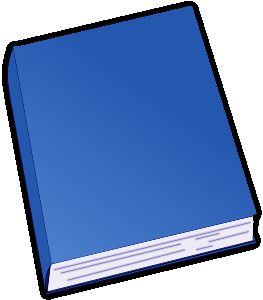Thought-Forms By: Charles W. Leadbeater (1854-1934) |
|---|

Thought-Forms by Charles W. Leadbeater is a captivating exploration into the realm of metaphysics and the vibrational nature of thought. The book delves deep into the concept that our thoughts possess an inherent power, shaping not only our personal realities but also creating subtle, ethereal forms that linger in the spiritual plane.
Leadbeater presents his findings in a meticulous manner, drawing extensively from his own experiences and research. The narrative unfolds in a profound and enlightening manner, guiding readers through the intricacies of the thought-form phenomenon. The author's expertise as a clairvoyant and his ability to perceive these energetic manifestations shine through vividly, adding a layer of authenticity and credibility to his assertions.
One of the most notable aspects of Thought-Forms is Leadbeater's exquisite descriptions of the visual manifestations of thought. Through his vivid prose, the reader is transported into a world where thoughts take tangible form, evoking emotions and stimulating the senses. The author's skillful portrayal of these thought-forms enables readers to visualize and understand their complexities, further deepening their understanding of the subject matter.
Moreover, Leadbeater explores the significance of different colors in thought-forms, presenting a comprehensive analysis that helps readers unlock a deeper understanding of their own thoughts and emotions. The book effectively bridges the gap between abstract metaphysical concepts and their practical implications in our everyday lives. By shedding light on the intricate connection between our thoughts, emotions, and the vibrational realm, the author empowers readers to take charge of their reality and consciously shape their experiences.
While Thought-Forms may require a certain degree of open-mindedness to fully appreciate its content, its underlying message carries profound relevance in our modern society. In a world that often disregards the power of thought, this book serves as a valuable reminder of the incredible influence our mental landscape exerts on the world around us.
The only potential criticism one might have is that the dense subject matter can be challenging to grasp at times. However, Leadbeater's careful explanations and illustrative examples counterbalance this drawback, ultimately rendering the book accessible to both novices and seasoned spiritual seekers.
In conclusion, Thought-Forms by Charles W. Leadbeater unravels the enigmatic nature of thought and its tangible impact on our existence. With his exceptional clairvoyant insights and articulate explanations, Leadbeater presents a compelling case for the profound significance of our thoughts and their ability to shape our reality. Whether one approaches this book as a skeptic or a firm believer, it undeniably provides a thought-provoking journey that expands our understanding of the unseen world around us. BY ANNIE BESANT AND C.W. LEADBEATER [Illustration: Publisher Logo] THE THEOSOPHICAL PUBLISHING HOUSE LTD 38 GREAT ORMOND STREET, LONDON, W.C. 1 First Printed 1901 Reprint 1905 Reprint 1925 Made and Printed in Great Britain by PERCY LUND, HUMPHRIES & CO LTD THE COUNTRY PRESS BRADFORD [Illustration: FRONTISPIECE MEANING OF THE COLOURS (see html version for this and other illustrations.)] FOREWORD The text of this little book is the joint work of Mr Leadbeater and myself; some of it has already appeared as an article in Lucifer (now the Theosophical Review ), but the greater part of it is new. The drawing and painting of the Thought Forms observed by Mr Leadbeater or by myself, or by both of us together, has been done by three friends Mr John Varley, Mr Prince, and Miss Macfarlane, to each of whom we tender our cordial thanks. To paint in earth's dull colours the forms clothed in the living light of other worlds is a hard and thankless task; so much the more gratitude is due to those who have attempted it. They needed coloured fire, and had only ground earths. We have also to thank Mr F. Bligh Bond for allowing us to use his essay on Vibration Figures , and some of his exquisite drawings. Another friend, who sent us some notes and a few drawings, insists on remaining anonymous, so we can only send our thanks to him with similar anonymity... Continue reading book >>
|
| eBook Downloads | |
|---|---|
|
ePUB eBook • iBooks for iPhone and iPad • Nook • Sony Reader |
Kindle eBook • Mobi file format for Kindle |
|
Read eBook • Load eBook in browser |
Text File eBook • Computers • Windows • Mac |
| Review this book |
|---|